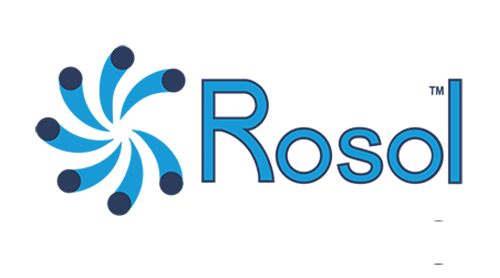Frequently Asked Questions (FAQs)
The ROSOL water purifier uses American reverse osmosis technology. It requires electricity to power the pump, which creates the necessary pressure to push water molecules—with a purity level of 0.001 micrometers—through the filtration membrane.
Water filtered by the ROSOL purifier can be drunk directly from the tap. The output water meets the QCVN 6-1:2010/BYT standard for bottled drinking water.
sRO technology is a filtration process that enhances the retention of minerals in water while reducing the amount of wastewater.
The filter cartridges in ROSOL purifiers are consumable during use. To maintain proper operation and ensure water quality, the system should be checked periodically, and the filters should be replaced when due.
Pre-filters No. 1, 2, 3, and 4 should be replaced every 3 to 6 months (depending on water quality and household usage) to protect filter No. 5 (RO), which is the key component determining the water quality of the ROSOL purifier.
The ROSOL water purifier is designed based on the characteristics of Vietnam’s water sources, with all filter cartridges engineered to remove substances that exceed safe drinking water limits, ensuring that the filtered water meets bottled drinking water standards.
- Removes turbidity and TSS (Total Suspended Solids) from the source water.
- Replacement interval is approximately 4–5 months.
- Removes chlorine, excess organic compounds, and odor-causing gases in the water.
- Recommended replacement interval: 4–5 months.
Removes arsenic, ammonia, and fatty acids, while also deodorizing and decolorizing the water.
Removes large impurities—down to 0.03 micrometers for PM series and 5 micrometers for BS series—along with other contaminants before the water enters the RO membrane.
Eliminates 99.9% of bacteria and harmful substances in the water, producing pure and safe drinking water.
Prevents bacteria from re-contaminating the purified water.
Can be used for cleaning, watering plants, laundry, etc., but not for cooking or drinking.
Note: This is wastewater from the RO membrane, not regular sewage. The RO membrane is the 5th stage in the filtration system. Incoming water passes through 4 pre-filters that remove sediments larger than 5 microns, odors, pesticides, and other contaminants. When it reaches the RO membrane, pure water is filtered through and stored, while the remaining water—which carries bacteria and harmful trace minerals—is discharged as wastewater.
Therefore, the wastewater from the purifier is cleaner than the raw input water. It can be reused for other purposes or returned to an underground tank or simply drained.
However, it should not be used for cooking or drinking, as the concentration of harmful substances may be higher.
The wastewater-to-purified water ratio is 40:60 — 60% purified water and 40% wastewater. This is the optimal ratio to ensure stable operation and to protect the lifespan of the RO membrane.
The total dissolved solids, also known as TDS, are inorganic and organic compounds found in water, such as salts and heavy metals. According to QCVN 01:2009/BYT — the National Technical Regulation on Drinking Water Quality — the safe TDS level is 500 ppm. After passing through the ROSOL purifier, this index is typically reduced to around 5–40 ppm.
Reasons why you should avoid drinking water with high TDS levels:
-
The water may have a bitter, salty, or metallic taste, and may carry an unpleasant odor.
-
It does not effectively quench thirst.
-
High-TDS water may contain salts such as nitrates, sodium, calcium, etc., which can lead to various health issues.
pH is a measure of the acidity or alkalinity of a water-based solution. A pH value below 7 is considered acidic, while a value above 7 is considered alkaline (basic).
According to Vietnam’s QCVN standards issued by the Ministry of Health, the acceptable pH range is:
-
6.5 to 8.5 for drinking water and tap water
-
6.0 to 8.5 for domestic (household) water
Why drinking water with extremely high or low pH is not recommended:
-
It can irritate the skin, eyes, and mucous membranes.
-
Low-pH water may negatively affect the digestive system, causing acid reflux, bloating, and digestive disorders.
-
High-pH water often has a soapy or strange taste, and may negatively impact food and beverages when used in cooking or drink preparation (e.g., neutralizing the natural acidity of fruits).
Both the 10L and 15L models of ROSOL water purifiers use a 24VDC power supply for the pump.
Both the 10L and 15L models of ROSOL water purifiers use a 24VDC power supply for the pump.
The ROSOL water purifier consumes very little electricity, using only a small amount of power to operate the pump.
Keeping the ROSOL water purifier plugged in all day has no negative impact, as the system automatically shuts off when the pressure tank is full—ensuring absolute safety and no unnecessary power consumption.
The answer is ‘No’. ROSOL water purifiers do not use any technology to alter water temperature, so the output water remains at the same temperature as the input source.
Fluoride? Yes
Salt? Yes
Chlorine? Yes
Arsenic? Yes
Many other contaminants? Yes
Bacteria and viruses? Yes


